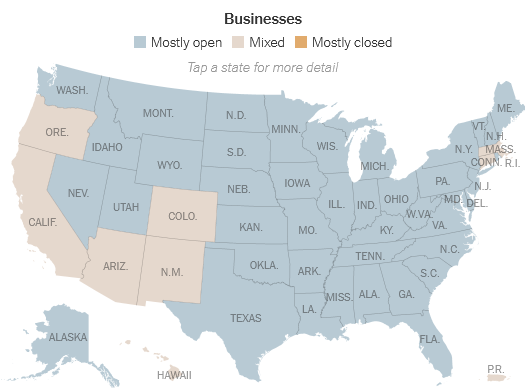Covid-19 remains the focus of concern for most major media outlets around the world, although things may be changing
As of Jan. 26, the Centers for Disease Control and Prevention (CDC) required all air passengers two years of age and older traveling to the U.S. from abroad take a COVID-19 test within 72 hours of departure to the U.S. and provide documentation of a negative PCR or Antigen test result to their airline before they would be allowed to board.
It was later added that they would also accept proof from a licensed healthcare provider documenting recovery from the virus within the past 90 days. These rules apply to both non-citizens as well as U.S. citizens returning to the U.S. from any international destination (with the exception of U.S. territories such as Puerto Rico and the U.S. Virgin Islands).
Shortly after taking office in late January, President Biden signed an executive order mandating (or people-dating if you prefer) the wearing of masks on federal property and domestic public transportation, including planes and airports. These fall under the jurisdiction of the Federal government.
The CDC currently recommends that travelers get tested three to five days after travel and isolate for seven days after travel, or isolate for 10 days after travel without testing. A great deal of attention at the national level, appears to be focused on travel restrictions and vaccine distribution, however the reality is many US states are now reopening business and dropping mask mandates.
Media issue daily reactions on actions taken by the Governors of Florida and Texas, reducing restrictions across the state and leaving people free to make their own decisions on how they protect their health. It should be noted that recently a number of states have moved in a similar direction, allowing business to open and dropping restrictions on numbers of people allowed to enter a restaurant, for example. Social distancing rules are still recommended and mask wearing is optional in some states.
Not all states are following in this direction. Most notable are California, Oregon and New Mexico, although some restrictions are expected to be reduced or removed later this month, as they head into warmer weather.
The New York Times has an interactive map showing the restrictions across the US. For those who are not able to view it due to their pay wall, there is another interesting set of maps available here.
Countries around the world are similarly easing restrictions while a few, including Canada have increased restrictions especially when it comes to international travel.
US News stations and a few politicians seem to have switched focus from the rising number of daily cases to the number of vaccines distributed. The reason being that the number of cases appear to have peaked, and never reached the staggering number of deaths predicted by various statistical models. With case numbers declining the media now report on the numbers of people who have been vaccinated with one of the several approved vaccines for Covid-19.
As of today there are over 21 million people currently infected globally however only .4% are in serious or critical condition, with the US approaching 30 million cases to date. Still, the US managed to maintain a lower death rate attributed to the virus, than several other countries including Belgium, Hungary, Italy and the UK.
To keep things in perspective it should be noted that according to estimates from the Centers for Disease Control and Prevention, the H1N1 swine flu may have infected over 1 billion people worldwide in its first 12 months, and resulted in the deaths of anywhere from 151,700 to 575,400 people worldwide by April 2010.
While it is clear the latest virus has proven to be at least 4 times as deadly as the swine flu, the economic damage caused by our response to it, has been far more damaging than many could have predicted.
We all remain hopeful that the newest coronavirus will continue to decline, as those before it have done, whether due to vaccines, herd immunity or the precautions taken to reduce the spread of the disease. Many are anxious to get back to work, or school or simply enjoying times with friends and family again.
We should still take the time to look into the actions taken in response to this latest pandemic and evaluate what was done right, what was done wrong and how we can improve our response to the next health threat.
If one thing is certain, this won't be the last, although we will all be glad to see it go.









